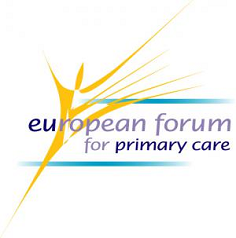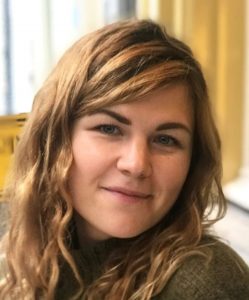PEAH is pleased to cross-post an article by AFEW partner organization. AFEW is dedicated to improving the health of key populations in society. With a focus on Eastern Europe and Central Asia, AFEW strives to promote health and increase access to prevention, treatment and care for major public health concerns such as HIV, TB, viral hepatitis, and sexual and reproductive health
First published February 24, 2020
By Olga Shelevakho
Communications officer, AFEW International
WHAT SHOULD BE A PRIMARY CARE?
 Which level does primary care (PC) in the EECA region have nowadays and how to improve that Prof. Jan De Maeseneer, Former Chair of European Forum for Primary Care, professor emeritus at Ghent University, talked to AFEW International.
Which level does primary care (PC) in the EECA region have nowadays and how to improve that Prof. Jan De Maeseneer, Former Chair of European Forum for Primary Care, professor emeritus at Ghent University, talked to AFEW International.
Jan, what are the features of a strong primary care (PC)?
We can speak of a strong primary care system when primary care is accessible for a large range of problems, coordinates care on a continuous basis, provides a broad range of health care services in partnership with informal care givers and operates with supportive governance structures, with appropriate financial resources and investments in the development of the primary care workforce. Effective primary care not only prevents diseases at early stages, but also stimulates people to take up healthier life-styles. Overall health is considered within primary care in a more holistic matter, paying attention not only to biomedical and mental health needs, but also to other causes of ill health, such as social determinants (e.g. housing conditions, employment). This makes primary care more person- centred than disease-centred.
PC of which country/region is the most developed nowadays?
Mostly it’s Europe. The countries with relatively strong primary care are Denmark, Estonia, Finland, Lithuania, the Netherlands, Portugal, Slovenia, some regions in Spain and Belgium, and the United Kingdom. Especially I like the examples of Denmark, Estonia, and Finland. These countries have «primary care zones». They look at the population 100-200 000 people and try to install a PC system at that level. That enables give a high degree of participation of all stakeholders. At that scale cooperation is easy, and there is an oversight of population’s health needs, to be addressed. The scale is not too big but big enough to have a “critical mass” for effective intervention for different kinds of problems.
And what about the EECA region?
A good primary care needs democracy. Unfortunately, the former “Semashko” Soviet Union healthcare system (HCS) with policlinics, lacking family physicians, and with doctors that earn very little money don’t allow to set up a good PC. I appreciate the development of Kazakhstan – recently they rediscovered the importance of family physicians. Also, I was very surprised by Kyrgiz Republic. Last year I had the opportunity to lecture for 5th year medical students in Bishkek. In discussion on patients’ stories, they demonstrated a high commitment and patient-centeredness, and excellent skills in clinical decision making. EFPC is trying now to help countries in the EECA region to establish better inter-professional training for primary care, using primary care practices in local communities
It’s important for countries in the region to work together and to build their own PC systems. In Eastern Europe Estonia and Lithuania are doing well. Belarus is not the best example, because of the political situation. It is difficult to combine strong primary care with political dictatorship. In Russia I see some nice things. In Saint Petersburg, for example, there are good departments of family medicine with person-centered approach. But it’s still a difficult country. Good PC is possible only in countries with freedom of speech, human rights, democracy and respect for diversity.
Why good PC is especially important for people living with HIV?
Usually in countries of the EECA region if a person has one of 3 diseases – HIV, TB or Hep, most of the health care resources focus on them. There is no general comprehensive, integrated Primary Care.
PC functions very well when you integrate the care and treatment for those diseases in the broader primary health care system (HCS) as World Health Assembly has clearly stated in resolution 62.12 (in 2009). In Africa I met people who had, for example, 5 diseases, so they had 5 different vertical programs of treatment and 5 different doctors who even didn’t speak with each other. Wise HCS is when you integrate these 5 approaches into one, because, for example, diabetes can be easily an (indirect) consequence of HIV treatment.
Is there a difference between European and the EECA region’s approaches in treatment of HIV+ people?
In western countries HIV/AIDS patients are patients like all the others, they are treated in PC. When primary care providers have problems, they refer patients to the secondary care. Such approach also avoids stigmatizing of people, because when they are treated differently, are included in a separate program, there is a huge risk of stigma. Also, the integrated approach is more cost effective.
How to change people’s minds, also doctors’, towards people with HIV?
Well, first of all, you need to retrain family physicians and other primary care providers. In Russia doctors have limited, if any, training in patient-doctor communication, are not familiar with a human rights approach. For example, in the undergraduate training in my university (Ghent University), there are 55 hours of practicing doctor-patient communications with videotaping, simulated and real patients. Also, it’s necessary to train a sufficient number of family physicians for Primary Care: this requires 3 years of full-time post-graduate training, with specific programs and standards. Besides, it’s important to inform and educate population.
People should understand that every person deserves our respect, and we shouldn’t stigmatize others because they have certain diseases. It’s an open culture in a country, and it is a responsibility of the government and civil society.
 What is the goal of EFPC in the region?
What is the goal of EFPC in the region?
EFPC has several goals everywhere, including the EECA region. They are:
– to provide a one-stop information hub and building a substantial collection of information and data over time;
– to guide the development of innovative interventions based on the principles of equity, access, quality, person- and people centeredness, cost-effectiveness, innovation and sustainability.
– to connect four groups of interested parties: patients, citizens and civil society organizations.
– to share communication and information;
– to establish networking and training.
Today we have a good contact with countries from the region, people join our meetings. On the 27 September 2020, we will have a big conference in Ljubljana and in the future possibly also a conference in Central Asia. We want to create a regional platform for exchanging experiences. We hope to bring together health care providers and governments so they can learn from each other how to organize service that reflects people needs.
